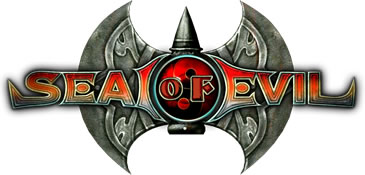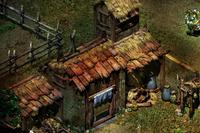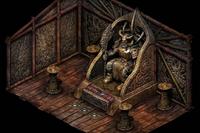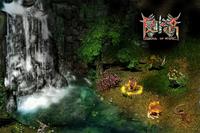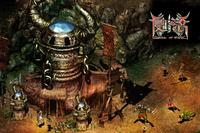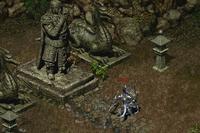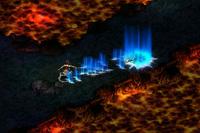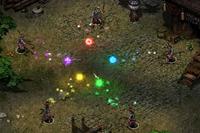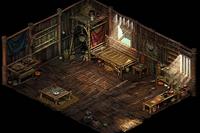|
|
|
Main News Forums Games Games Database Top 100 Release List Support Files Features Reviews Previews Interviews Editorials Diaries Misc Download Gallery Music Screenshots Videos Miscellaneous Staff Members Privacy Statement |
Seal of Evil Preview
Seal of Evil is a prequel to Chinese developer Object Software's Prince of Qin from 2002. Refining many of the elements from the underrated Prince of Qin, Seal of Evil combines a fairly deep party-based action-RPG with an authentic semi-historical Chinese setting. I've spent a few hours with some preview code from UK publisher GMX Media, so read on if you'd like to escape Tolkien-esque fantasy worlds and explore ancient China. The Qin Dynasty Prince of Qin explored an alternative historical timeline around 2200 years ago in the Qin Dynasty. According to history, Crown Prince Fu Su was betrayed by a false Imperial decree to kill himself, which he duly obeyed. In the game Prince of Qin, the Prince suspects foul play and defying the order, sets out to discover the betrayal. Seal of Evil explores a time before this, with the Qin Empire attacking the Baiyue people of southwest China. Baiyue leader Lan Xiong desperately holds the Qin invasion off but many years later, dies mysteriously. Playing his daughter Lan Wei, the player sets out to Qin's central plains to discover the truth about his death. In Seal of Evil, the player leads a small party of up to three characters, starting with the Witch Lan Wei and the Beastman, Lian Hu. There's no initial character choice or creation but other characters can join or be swapped into the party as the game progresses. Seal of Evil is an isometric 2D hack-and-slash action-RPG, although a number of elements add considerable depth such as dialogue options, item creation, a complex elemental system and multiple endings. Although semi-historical, a number of fantasy elements such as magic are used to flesh-out an otherwise genuine Chinese setting. For those who still appreciate 2D isometric RPGs and crave a fascinating change of setting, Seal of Evil is an interesting game. Five Elements The cornerstone of Seal of Evil is a consistent theme of five traditional natural elements: Metal, Wood, Water, Fire and Earth. This is used to create a fairly complex rock-paper-scissors balance relationship that runs through almost every aspect of Seal of Evil: Metal promotes Water, Water promotes Wood, Wood promotes Fire, Fire promotes Earth and Earth promotes Metal; Metal restricts Wood, Wood restricts Earth and so on. This system forms the major character attributes and drives the secondary derived attributes - Metal affects Attack and Wood affects HP and health recovery, for example. It's also used to create bonuses and immunities in attack and defence, skills, weapons and armour. For instance, the skill Inferno receives a bonus if a fire-weapon is equipped while Poison Wave is wood-based. All up, it's an appealing theme and adds strategic depth to item and skill choices in combat. It also forms the basis of the "Making Things" item creation feature, which I'll touch on later. Seal of Evil is more story-driven than many action-RPGs and there is a large number of NPCs to discover and talk to as you explore the discrete maps that make up the world. There is a full dialogue system and although the quests in the early part of the game I saw were mostly of the Fetch or Kill variety, there was a hint that different responses may impact the game. Object Software promises that dialogue choices and the outcome of side-quests will change the direction and lead to one of several different endings. As with any action-RPG, combat is a key part of the game. Combat is fast-paced and often against numbers of enemies but the pause-and-play system allows the opportunity to change skills and equipment and direct each party member. There are five character classes: Paladin, Assassin, Witch, Beastman and Wizard, each with different skills and a balance of close melee and ranged magic in the party seems desirable. Understanding and using the five elements system is the key to success and allows the player to implement a variety of strategies. Each enemy has different elemental strengths and weaknesses and pausing to adjust skills or equipment to best suit is quite rewarding.
Making Things One of the most interesting features in Seal of Evil is the "Making Things" system - an item creation system founded in the five elements. An impressive variety of components can be found throughout the game - certain trees and rocks drop different woods and ore, plants, animal meats and parts, gems and so on can be gathered (or bought) and combined to create new items or enhance existing equipment. I had limited opportunity to experiment with Making Things in the small part of the game I've seen so far but I combined five different woods and ores to add a significant attack bonus to a staff with my lowly 3rd-level Witch and it looks to be an absorbing feature. Getting Technical There's no two ways about it: Seal of Evil is has some beautiful art but the graphics are technically dated. The 2D engine uses pre-rendered backgrounds, 2D character sprites and some 3D particle effects for some spells and skills. The pre-rendered backdrops are attractive, with lush vegetation, beautifully detailed architecture and colourful locations with a consistent Asian feel. If you appreciate the art in games that use pre-rendered backgrounds, there's plenty to like in Seal of Evil. On the other hand, the animation is limited with insufficient frames producing jerky movements. Special effects are bright and colourful but could also do with more frames and the maximum resolution of 1024x768 is restrictive by today's standards. Still, there are many who appreciate the variation and detail in a 2D engine and Seal of Evil's graphics do have charm - if only the animation were better. The soundtrack features a mix of Chinese themes ranging from traditional instruments to more modern stylings that certainly sets an appropriate mood. The sound effects are adequate and the limited voiceovers are passable. Seal of Evil has a reasonably effective interface, with on-screen elements that don't get in the way and quick access to information screens like Inventory, Character and Quests. The Quest Log is colour-coded, with places, people and so on highlighted in various colours, which is a nice touch. Skills and magic can be set to the left- or right-mouse with a simple on-screen selection and a mini-map can be toggled on or off in the top right-hand corner. Time to go… Hidden beneath Seal of Evil's dated exterior is an interesting RPG with a well thought-out and consistent theme of traditional Chinese elements, along with decent dialogue and good item crafting. The combat seems straightforward but has some depth through the five-elements system. Fans of Chinese or Asian settings should definitely take a look, as should those who might enjoy a different action-RPG with depth and charm over graphical splendor.
Links
Average Reader Ratings: 7 (2 votes) |
|||||||||||
|
All original content of this site is copyrighted by RPGWatch. Copying or reproducing of any part of this site is strictly prohibited. Taking anything from this site without authorisation will be considered stealing and we'll be forced to visit you and jump on your legs until you give it back. |
||





